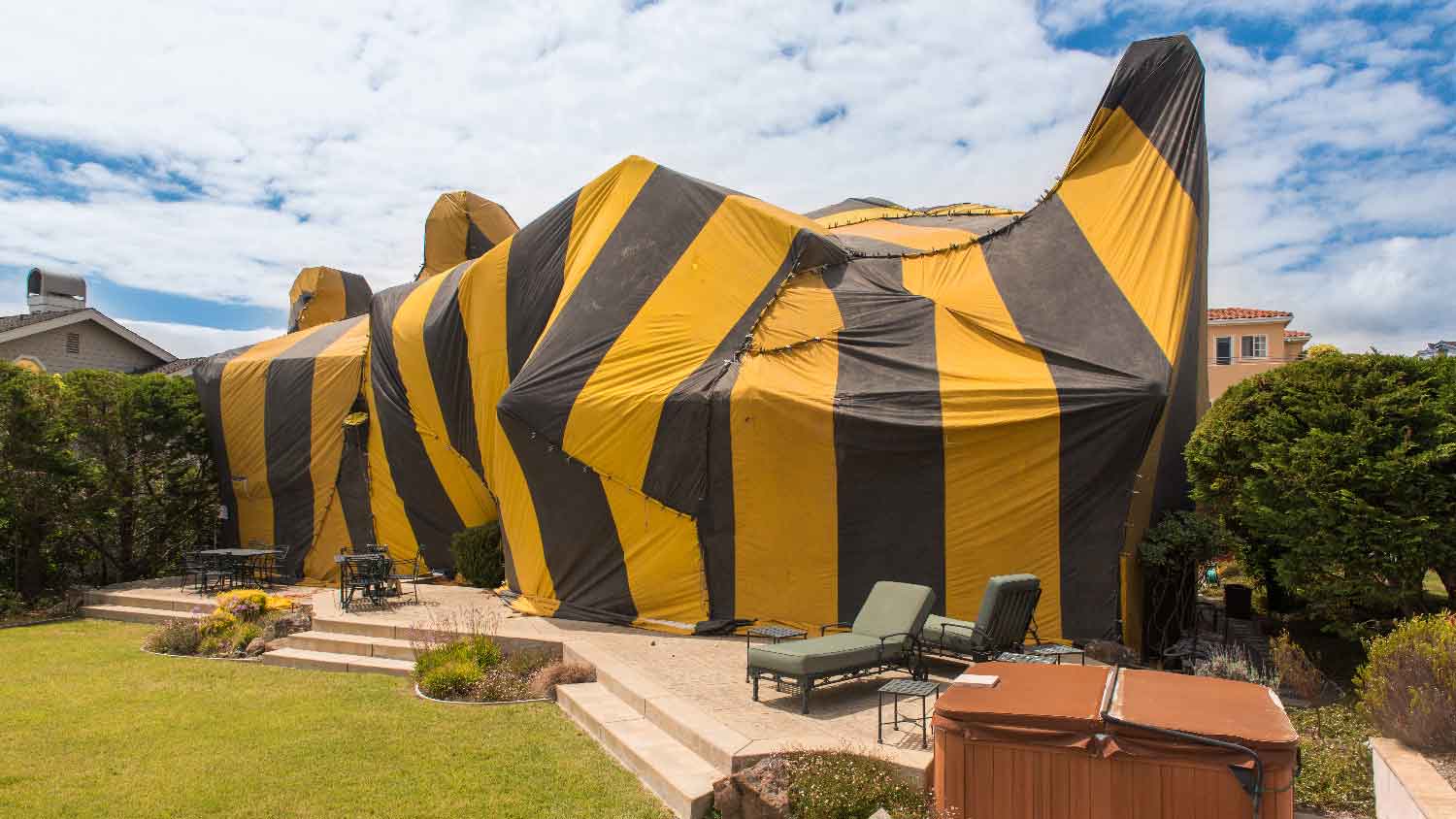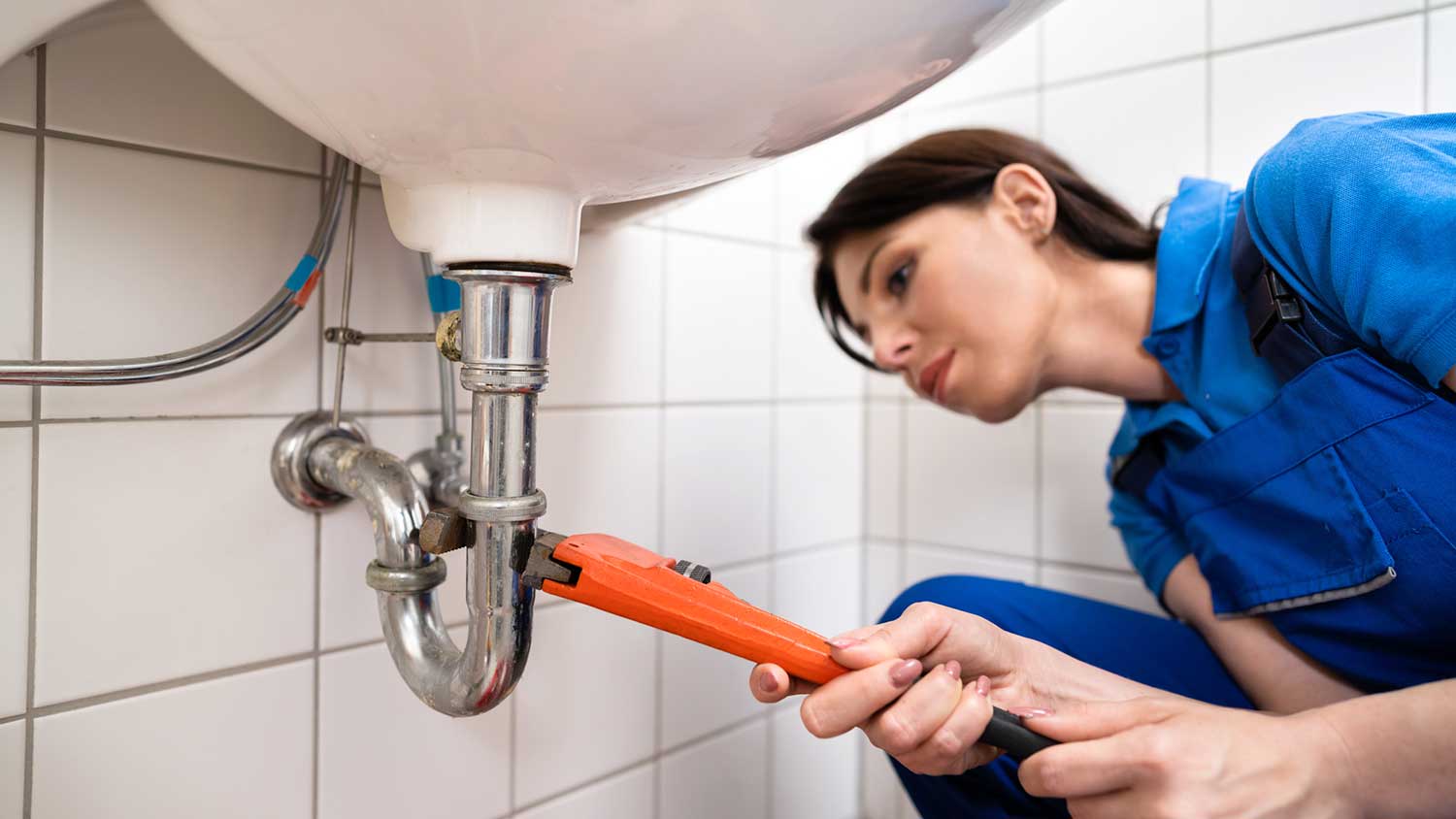
Bats may have their benefits, but you don't want them taking up residence in your home. This guide will help you understand bat removal costs.
Take the proper precautions to sidestep a stinging swarm


Wasp removal isn’t for the faint-hearted or ill-prepared. Learning how to get rid of paper wasps requires proper planning, the right tools, and a good exit strategy are key to avoiding a stinging swarm. Paper wasps aren’t as aggressive as other types of wasps, like their yellow jacket and hornet relatives, and their nests hang rather than being built into the ground. This feature makes tackling paper wasp nest removal yourself a less daunting task.
However, that doesn’t mean you should swing a bat with a hose at the ready or plan to set the nest alight. These troubling techniques are more likely to end with you sprinting away from a swarm. If you want to learn how to get rid of paper wasps successfully and sting-free, follow this step-by-step guide.
Some types of hornets and wasps are more aggressive than others, so call a professional exterminator if you spot a nest in your yard that's bigger than a fist. Don't hesitate to take pest control action to prevent the infestation from growing.
Paper wasps belong to a species of wasps known as vespid wasps. There are hundreds of paper wasp species around the world, with about 22 in North America. These wasps are semi-social and live in small colonies, but don’t have any hierarchy of workers.
Paper wasps look similar to yellowjackets, and feature the following characteristics:
Narrow waists
Black or brown bodies with yellow colored lines (some may be red or other bright colors)
Six long legs
Two antennae
Triangular when viewed from the side
You can also identify paper wasps by their nests, which are made from regurgitated wood pulp. The nests resemble paper and typically have visible hexagonal holes.
The best wasp sprays contain the active ingredients pyrethrin or pyrethroid. Instead of lingering too long in the environment, they kill wasps on contact and break down rapidly in sun and rain. Remember that these are strong chemicals, so only apply the spray as directed on the label and wear rubber gloves. Don’t forget that paper wasps are a hazardous species to remove, so don’t hesitate to hire a wasp control professional near you to handle the task.
These types of wasps are most active during the hottest part of the day. Mounting your attack after dusk or before sunrise means they’re more likely to be in the nest and docile. Don’t pick a windy day either—strong gusts direct the spray away from the nest site.
Nest removal is easier in the spring and early summer than later in summer, as the colony hasn’t grown too much yet. Thankfully, paper wasp colonies rarely have over 100 adults, rather than the thousands often seen in mature yellow jacket nests.
You don’t have to invest in full personal protective equipment (PPE) to keep yourself protected from potential stings. But covering up as much as possible minimizes the chance of getting stung by stray wasps.
Think hats, face coverings (like bandanas or buffs), long pants, full sleeves, thick socks (with pants tucked into them), gloves, and layers. The thicker the fabric, the less likely a wasp stinger will penetrate it.
Follow the wasp spray manufacturer’s guidance for safe and successful application of the chemical spray. Refer to the directions on the can. Here are some precautions to take:
Move children and pets indoors during and immediately after application.
Plan a clear escape route should things go wrong to avoid tripping over obstacles or getting trapped beside an angry swarm.
Work out the best position for spraying—standing under the nest means wasps and spray could fall into your eyes.
When using a ladder, make sure it’s not wobbly or offering poor access.
Read all instructions for spray application in advance.

The aim is to saturate the nest directly through its openings. The wasp spray forcefully exits the can, allowing you to stand a safe distance away from the nest and still accurately target it. Once you have drenched the nest, immediately leave the area.
One can of spray is usually enough to douse paper wasp nests (they’re smaller than hornet nests), but having an extra one on hand is helpful—just in case.

Watch activity around the nest over the following 24 hours. Absent workers returning to the nest may be present. If you didn’t saturate the nest enough, some wasps in the center might have survived. If necessary, spray the nest again following the same steps.
Once there are no further signs of activity and the spray has completely dried, knock down the nest, put it in a strong trash bag, seal it tightly, and dispose of it.
To knock down the nest, you can use the following tools:
Broom
Hose
Ladder
It’s often safer and more successful to leave wasp extermination to the pros. Professional exterminators have the right gear, can access difficult-to-reach locations, and use professional-grade chemicals they know how to apply safely. While it’s possible to remove paper wasp nests on your own, the safer option is to hire a local exterminator.
Paper wasp removal costs an average of $100 to $200, compared to around $30 for a couple of cans of wasp spray, but you’ll have the peace of mind that your two- and four-legged family members are safe.
After the wasps are gone, remove their nest to discourage them from returning. Then, implement these preventative measures to keep them at bay:
Screen off any vents or openings to attics, crawlspaces, and basements.
Inspect your home for cracks and gaps and make sure to seal them with caulk.
Add paint or varnish to exterior surfaces, as paper wasps have difficulty attaching a nest to these areas.
Clean areas where you prepare food regularly
Tightly seal trash cans and recycling bins.
Maintain bushes close to your home to discourage them from making nests on inner branches.
Paige Bennett contributed to this piece.
From average costs to expert advice, get all the answers you need to get your job done.

Bats may have their benefits, but you don't want them taking up residence in your home. This guide will help you understand bat removal costs.

Keep your home free of termites and the damage they do. Learn more about inspections, infestations, and the average cost of termite treatments.

Tenting is a costly but effective way to exterminate termites. Learn the average termite tenting cost and everything that will factor into your budget.

Foxes are opportunistic scavengers, so you don’t want to give them an excuse to park on your property. Learn how to keep foxes away from your yard.

Water bugs are pesky creatures that may enter your home in search of water and food. Learn how to prevent water bugs from entering your home.

Discover methods for how to get rid of rabbits using humane tactics, including fences, repellents, and a decoy garden. Get ready to send those bunnies hopping.